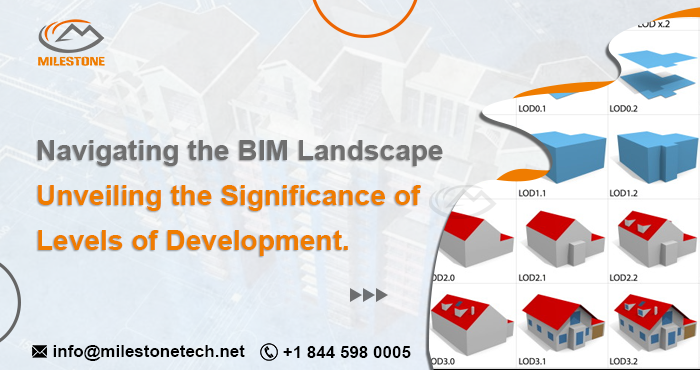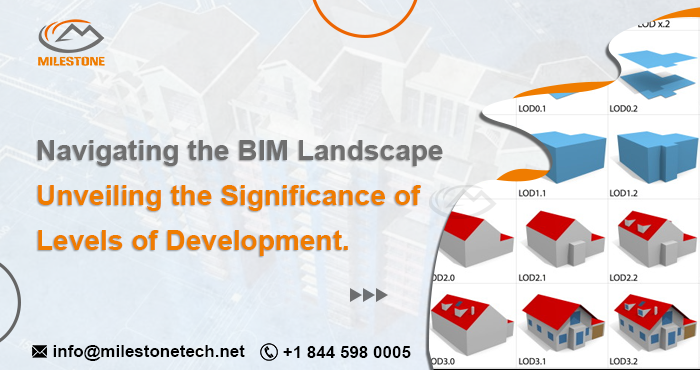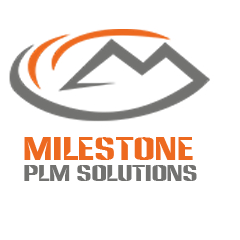Navigating the BIM Landscape: Unveiling the Significance of Levels of Development
Significance of Levels of Development

Building Information Modeling (BIM) has revolutionized the field of construction and engineering services, offering a collaborative and data-driven approach to project management. Within the BIM framework, understanding the concept of Levels of Development (LOD) is crucial for effective project execution. In this blog, we will explore the LOD in BIM in navigating the complex BIM landscape.

Understanding Levels of Development (LOD):
LOD serves as a critical parameter in BIM, defining the extent of detail and accuracy of information within a model at different stages of a project. It classifies the maturity and reliability of the BIM elements, ranging from LOD 100 (conceptual) to LOD 500 (As-built). Each level represents a distinct phase in the project lifecycle, providing a roadmap for stakeholders to manage expectations and make informed decisions.
Enhanced Collaboration and Communication:
One of the primary advantages of incorporating LOD in BIM is improved collaboration and communication among project stakeholders. By clearly defining the level of detail at various stages, architects, engineers, contractors, and clients can align their expectations and responsibilities. This transparency minimizes misunderstandings, enhances coordination, and fosters a more integrated project delivery process.
Phases of LOD Implementation:
To comprehend the practical application of LOD, let's explore its relevance in different phases of a construction project:
Conceptualization (LOD 100): LOD 100 focuses on the basic representation of elements during the conceptual phase. It helps stakeholders visualize the design intent and make initial decisions.
Design and Development (LOD 200-300): LOD 200 and 300 enhance the level of detail as the project progresses through the design and development stages. Precise measurements and specifications are added, facilitating more in-depth analysis and decision-making.
Construction Documentation (LOD 400): LOD 400 is crucial during the construction documentation phase, providing a detailed and comprehensive model. Contractors can extract accurate information for construction, reducing errors and rework.
As-Built and Facility Management (LOD 500): LOD 500 represents the final as-built model, capturing precise details for facility management. It serves as a valuable resource for maintenance, renovations, and future expansions.
Conclusion:
In conclusion, navigating the BIM landscape requires a nuanced understanding of Levels of Development. From conceptualization to facility management, LOD serves as a guiding framework, enhancing collaboration, mitigating risks, and optimizing project outcomes. As technology continues to evolve, embracing the full potential of BIM and LOD ensures that the construction and engineering services industry remains at the forefront of innovation and efficiency.
Source: https://www.milestonetech.net/secrets-of-lod-in-bim-modeling/












